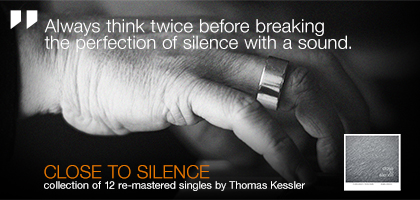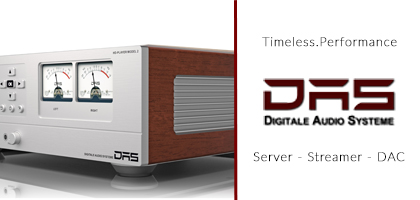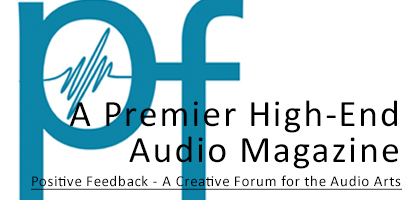No. 251 April 2025
- COVER REVIEW: PERREAUX 300iX ⸜ integrated amplifier » NEW ZELAND
- KRAKOW SONIC SOCIETY ⸜ № 150!: XACT S1 Evo – file transport » POLAND
- COLUMN ⸜ HISAO NATSUME presents: In search for the lost great pianism - Chopin tradition » part 1: POLAND
- REVIEW: ACCUPHASE A-48S ⸜ power amplifier » JAPAN
- REVIEW: BURSON AUDIO Timekeeper Voyager Max V400 ⸜ power amplifier • monaural + DC power supply » AUSTRALIA
- REVIEW: FEZZ AUDIO Olympia ⸜ integrated amplifier » POLAND
- REVIEW: WILK AUDIO PROJEKT Vega 3 ⸜ loudspeakers • floorstanding » POLAND

|
Editorial
Text by WOJCIECH PACUŁA |
 |
No 242 July 1, 2024 |
|
A cup. Or – about the excess
LONG, LONG TIME AGO, beyond the woods, beyond the mountains, there lived a grandmother. She lived in a small house, dividing her time between working in the garden just behind the house, and the cow and goat, her faithful companions. She had an iron cup in which she brewed herbs in the morning and tea in the afternoon - strong, thick and aromatic. That's how she lived peacefully. And she had family - children, grandchildren and great-grandchildren. They rarely visited her, because the trip was long, all the way up to the forest. But when they did show up, they would bring something with them - either new curtains, or a rug, or pillowcases for bedding. These were useful gifts, and the grandmother didn't protest too much, and after half an hour of fretting, sighing and shoving the gifts back into the children's hands, she hid them in the big closet standing in the bedroom. 
Nothing lasts forever, so after a while they got bored with what they brought her and focused on one thing - cups. Colorful ones, with stickers and inscriptions, in different shapes and capacities. They wanted well and were happy at the same time, because they didn't have to invent anything new anymore. In the beginning, the heroine of this story was even happy, staring at the patterns, reading the slogans and pleasing her eyes with the colors. One thing did not change - the ritual in which she did not want to accept anything new. For a long time she tried to arrange them, either by color, or by theme, or by size, she even had a new shelf made for them. She would bustle around them worried about their number and, led by the desire to please the children, she would wash them, wipe them, trowel them. After a while, however, something changed. She stopped making excuses and wordlessly took the packages from the children's hands. They didn't immediately realize it, after all, they weren't very bright, and also their mother's age made them forgive, in their mind, many things. After some time, the cups from the shelf above the table began to disappear. And again - they did not immediately notice it. Whether they visited their parent's house not often enough, or whether they themselves were beginning to suffer from an old age - in a word, they missed the moment. One day, however, something snapped them out of this numbness and they asked their grandmother: "What happened to the cups from us?" She looked at them with a smile and answered: "And what was supposed to happen, after your visits I hide them in the chamber." The kids got agitated - although it's no longer appropriate to talk to sixty-year-olds that way - they began to reproach their mother for her ingratitude. To which the latter replied briefly, "Every excess is pointless." It somehow came to mind when leaving a meeting at Göbel High End headquarters, which Dirk Sommer, editor-in-chief of hifistatement.net magazine (→ www.GOEBEL-HIGHEND.de took me to after the first day of Show. Completely by accident three of us met there, I mean people of the Polish audio media: Andrzej Kisiel, chief of "Audio", Jacek Kłos, deputy chief of polish magazine "Hi-FI i Muzyka" (“Hi-Fi and Music”), and yours truly. But that’s not what I wanted to talk about. Dirk and I listened to the company's top-of-the-line set of speakers, the Divin Majestic, with additional Divin Sovereign subwoofers, playing in a 50-square-meters room with top-of-the-line CH Precision, Kronos and Wadax electronics. We had something to drink there, talked some, laughed some, made fun of something, and on our way out we received gift bags, the centerpiece of which was a cute, chic mug with the company's logo. Some fiftieth mug I've received. I couldn’t really refuse, after all, it's a gift, but - like most mugs - it was an unnecessary gift for me. 
And that's a problem. For we live in times of excess of almost everything - at least in Europe. Too often there is too much of everything. This title cup seems to me a good metaphor for modern times. On the one hand handy, useful, cool, and on the other irrelevant. Inexpensive, and quite grand. The same, and different every time. I have a similar impression when hearing about another "immersive" type project. Let me remind you that it is about surround audio systems with additional layer of height information. Similar solutions have been known for a long time, to recall one variation of the Ambisonic system, or the 2+2+2 system from German publisher Musikproduktion Dabringhaus und Grimm (MDG). New labeling, a new name, however, it allows the idea to be presented as something new and fresh. And this is how it is presented by the record labels. IMMERSIVE SOUND • A surround sound system with an additional layer of height information. The term Immersive Sound was coined by Auro-3D creator Wilfried Van Baelen and has been adopted by the Society of Motion Picture and TV Engineers (SMPTE). As we read in PCMag magazine, Immersive Sound is concerned with pitch and sound sensation, while Immersive Audio deals with technology (more → HERE, accessed May 23, 2024).Compared to a stereo system with speakers at ear height, Immersive Sound also offers speakers placed on the wall or ceiling to create a spherical 3D sound source. The first comprehensive Immersive Sound solution was introduced, using existing us surround modes and formats, by Auro-3D in 2010. ● SOME YEARS AGO, at the High End 2019 show in Munich, I attended a demonstration put together by Columbia Publishing and the heirs of Miles Davis (more → HERE). Its goal was to play the Kind of Blue album in Dolby Atmos. Admittedly, at the time the word 'immersive' wasn't yet so widely coined, but this was exactly this kind of playback - with a dozen speakers around us and above us, as well as several subwoofers; the speakers were provided by PMC, the event's organizer. |
To be honest, I liked it enough to make me want to listen to more music in this way. So I stayed longer and asked for more samples. I liked them, too. And yet, returning home two days later, somewhere still over Bavaria, i.e. before the Czech border, it occurred to me that it was great fun, but on a daily basis I wouldn't want to listen to music this way. It goes without saying that I'm used to stereo sound from two speakers, so anything else is problematic for me. But there was something in this presentation that went beyond my needs, that didn't allow me to relax, and that cried out for attention. Major record labels, mixing and mastering studios, and the audio pro trade press all see immersive sound as the sound of the future and source of additional revenue. One only has to look at any issue of the American magazines Sound On Sound or Mix Online to get the impression that no one wants to talk about anything else. Descriptions of new installations in old studios and new studios "set up" with Dolby Atmos in mind are a daily occurrence in them. In part, the studios can be absolved. They have to offer this possibility, because the top labels will not commission them to remaster or remix their music, even in two channels. Publishers, however, are "targeting" multi-channel space, so to speak. 
Even Paul Sinclair, editor-in-chief of SuperDeluxeEdition, an online magazine focused on physical releases, promotes this type of sound. When describing new releases, he explores their lack of immersive spatial mixing whenever he can. He goes further, by the way, because the main purpose of the magazine's SDE Surround Series, available on Blu-ray discs, is to promote Dolby Atmos. And that's a system capable of transmitting up to 128 tracks (theaters up to 64), in systems from 5.1.4 upward. This numerical description speaks of two front speakers, two rear speakers, a center speaker, a subwoofer and four effect speakers on the ceiling and sides. And that's just the beginning, because there can be up to six surround speakers, as well as subwoofers. This brings us back, in an even more complex entourage, to the days of quadrophonics and the efforts of publishing companies wanting people to listen to music with four speakers, not two. This is recalled in an article by Tom Fine in the May issue of Stereophile magazine, entitled The forever half-life of quadrophonics, in which one can easily sense not only nostalgia, but also praise of quadrophonics. What's telling in this context is Steven Wilson's patronage of the High End show again this year, and the demonstrations he led for the entire four days of recorded mixes in Dolby Atmos, something he now specializes in. It's probably a coincidence, but he first patronized the event in 2019, while still a remastering master (King Crimson, Yes, etc.), when I heard Davis playing above me. 
This excess of "everything" extends beyond technology. It can be seen not only in the tangible world but also in language. As it turns out, one of the stronger trends in today's humanities is the simplification of language, especially in writing, because in speech it happened long ago. Kasia Sobczak, curator of visual arts and the AiR Goyki 3 artist residency program at Goyki 3 Art Incubator, said about this process:
Although Sobczak nuances her statement, distinguishing between simple writing and so-called easy language - easy to read, in which, she says, "the texts are even shorter and often accompanied by pictures", but the message is clear: let's write more simply. Why? Because most people nowadays are unable to focus on longer texts and minimize the effort they put into reading, often just scanning titles. So how is it, should it be simple or not? Should we deepen things or simplify them? Should our audio systems be simple or elaborate, are we content with two speakers or we can’t live without eleven of them? And how many of these cups do we finally need, one, two, or ten? I could say that "the answer is contextual", that "it depends", that "let each do their own thing". But no, I have a clear opinion on the subject: everything must be as simple as possible, but no more than the situation demands. Emptiness is as unpleasant as meaningless splendor. 
If we want a super-duper home theater system, there is no other way - more (speakers) is better. Sometimes simplification is counterproductive. With music, however, it is different. In my opinion, but only my opinion, stereophony is the "golden mean". And it suffices with excess. Two channels are such a refined system of music transmission that any change brings more problems than it solves. Let them say what they want, technology will not save us, only common sense will. So I would like to supplement the definitions of the excess from the beginning of this article with a term that is no longer used, but comes from Witold Doroszewski's polish dictionary. Published in 1958-1969 as "Dictionary of the Polish Language of the Polish Academy of Sciences", abbreviated as SJPD, it said that 'hyperopia' is "the property of sight consisting in seeing farther objects more clearly, more accurately than closer ones; farsightedness." In the case of the excess in question, farsightedness is therefore simply nearsightedness. ● WOJCIECH PACUŁA |
About Us |
We cooperate |
Patrons |
|
Our reviewers regularly contribute to “Enjoy the Music.com”, “Positive-Feedback.com”, “HiFiStatement.net” and “Hi-Fi Choice & Home Cinema. Edycja Polska” . "High Fidelity" is a monthly magazine dedicated to high quality sound. It has been published since May 1st, 2004. Up until October 2008, the magazine was called "High Fidelity OnLine", but since November 2008 it has been registered under the new title. "High Fidelity" is an online magazine, i.e. it is only published on the web. For the last few years it has been published both in Polish and in English. Thanks to our English section, the magazine has now a worldwide reach - statistics show that we have readers from almost every country in the world. Once a year, we prepare a printed edition of one of reviews published online. This unique, limited collector's edition is given to the visitors of the Audio Show in Warsaw, Poland, held in November of each year. For years, "High Fidelity" has been cooperating with other audio magazines, including “Enjoy the Music.com” and “Positive-Feedback.com” in the U.S. and “HiFiStatement.net” in Germany. Our reviews have also been published by “6moons.com”. You can contact any of our contributors by clicking his email address on our CONTACT page. |
 



|
   |
main page | archive | contact | kts
© 2009 HighFidelity, design by PikselStudio,
projektowanie stron www: Indecity
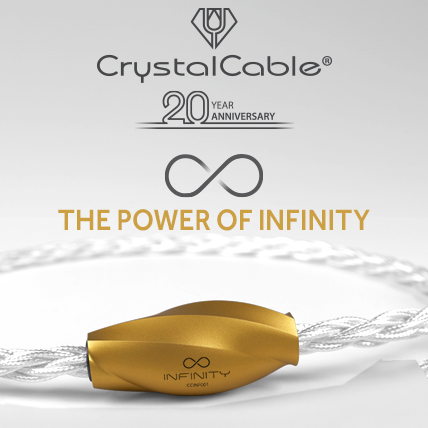


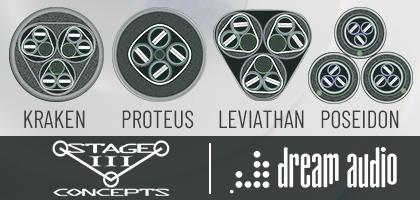


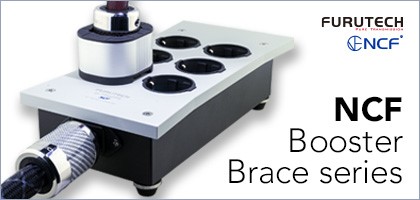
 Plain language is a writing style designed to make the text easy to understand for a wide range of readers. An inviting, clear and understandable way of writing, in which the recipient, not the author, is what matters most. Plain language has some dozens of rules. I don't know all of them, but above all it is supposed to be short, engaging and understandable.
Plain language is a writing style designed to make the text easy to understand for a wide range of readers. An inviting, clear and understandable way of writing, in which the recipient, not the author, is what matters most. Plain language has some dozens of rules. I don't know all of them, but above all it is supposed to be short, engaging and understandable.